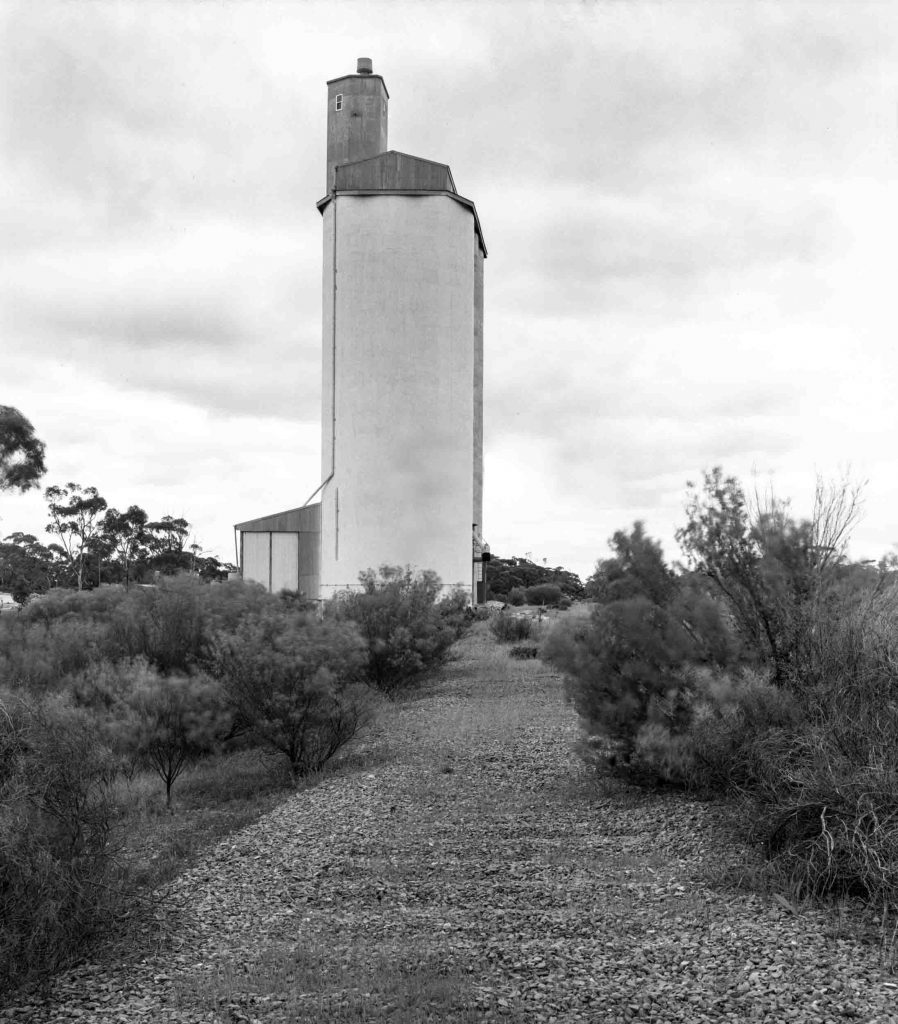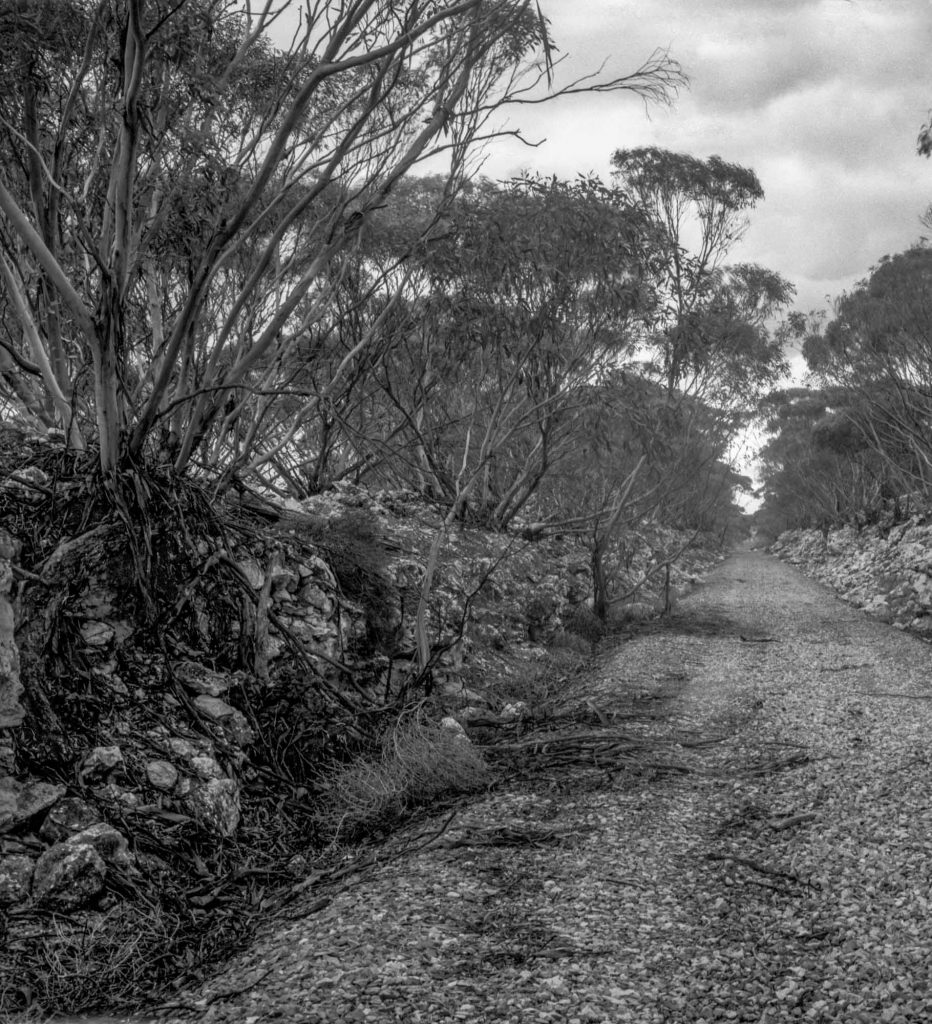One of the old railway lines that I traced in 2020 was the line to Galga in the Murray Mallee. It was a branch line of the Karoonda- Waikerie railway line, which had been in 1914 in order to develop the Mallee. Around 10-20 people currently live in Galga and there is a small bulk grain silo there, but it is no longer regularly used. I saw traces of the branch line continuing past the Galga silo onto Mantung. A water tower still stands in Mantung, and the remains of various railway sidings are still visible amidst the limestone rocks and scrubby bushes.
I also made a detour to Galga in 2021 and I was able to make this 8×10 version with a Cambo monorail:

What I had in mind with this photos was the straightforward approach of 19th century topographics, as I imagined would have been taken by Captain Samuel Sweet if he had traveled on the train and photographed this part of the Mallee. Imagined because Sweet died in 1886, almost 30 years before the Karoonda- Waikerie railway line was built and he showed little interest in the Murray Mallee. His topographical approach appealed to me as it avoided both the picturesque and the sublime.
Sweet would have made the scene appealing as he used his photography to advertise the development of the colony to persuade prospective settlers in the British imperial capital to immigrate to South Australia. Though photographic historians frame Sweet in terms of the colonial views trade (ie., a commercial product for a photography market) Sweet highlighted South Australia’s progress, prosperity and opportunities — its modernity through the establishment of British civilisation.
State governments of South Australia not only regarded themselves as the promoters of economic development, but also as the architects of a desired cultural landscape and social class. Their agricultural development policy was driven, at least in part, by the pursuit of a “yeoman ideal‟—settling a bold peasantry on the soil. The important characteristics of this development of an agricultural landscape were that farms be freehold properties, family operated and cultivated. Building a network of railways would improve the efficiency and viability of this form of agriculture.
This picture of a cutting of the old Eudunda-Morgan railway line was made using a Linhof Technika 70 and a 6×7 film back:

There is no need for me to advertise or make agricultural development appealing, since the late nineteenth and early twentieth century ideal of South Australia’s modernity as an agricultural yeoman paradise had long come to an end. That dream failed (due to low rainfall, small holdings and poor soils) and I’m photographing its ruins.
I haven’t been able to scan the majority of the 8×10 negatives from the 2021 trip due to my Mac Pro no longer working. It died recently and I have just upgraded to a Mac Studio. I purchased VueScan software to enable me to keep using my old Epson V700 flatbed scanner and avoid it going to landfill. Scanning the 8×10 b+w negatives from this trip is my next job.

